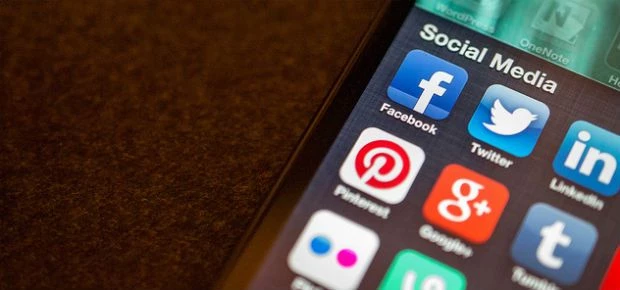
Partner Article
You are what you tweet
Anne-Marie Bailey is the PR Manager at r//evolution, an integrated brand communications consultancy, based in the Northern Design Centre in Gateshead. Here she explains why you are what you tweet and how while posts across social media channels can be deleted, the internet never forgets.
A few weeks ago I was asked to give a series of guest lectures to students studying for a qualification in public relations at the University of Sunderland about social media. Considering I too am a graduate of the CIPR accredited Master of Arts degree in Public Relations, and also found my first job in the marketing communications industry through my use of social media, I jumped at the chance to return to the classroom.
One of the messages I tried to hammer home to the students was that – as the saying suggests – nowadays, you really are what you tweet. When submitting a job application, the internet is the first port of call for a potential employer wanting to do a bit of digging and check out a potential employee. And where do they usually check first – social media channels of course!
At r//evolution, I receive numerous speculative emails enquiring about jobs, internships and work experience placements. If I like the look of the person’s CV, I too am guilty of flicking through Facebook and trawling through Twitter to see what else I can find out about the applicant – and I know I’m not alone!
That’s why I told the students it’s so important to segment their use of social media and the same can be said for brands too. Think about it, on a personal level, an individual may not have an account with every single available social media platform that’s out there. Perhaps it just doesn’t appeal to them, or maybe their friends, family, whoever it is they want to communicate with, just don’t use that channel either. For a brand, there’s no point in signing up to a social media platform where the people you want to be speaking to and building relationships with just don’t ‘gather’ virtually online.
When you do know which channels your audience use, think about the different sub-groups within the audience and what type of content would be interesting to them. When speaking with the students, I told them that for me, Facebook is purely fun. My privacy settings are ramped up and I use it as a place to catch up with university friends and reminisce about days gone by. On the other side of the scale there is LinkedIn. For me, this is purely professional and any conversations about weekend antics are strictly prohibited. Twitter is somewhere in between – I network with fellow PR professionals but also use the platform to connect and catch up with friends too.
The same can be said for brands. Work out what it is you want to say, how you want to say it and who you want to say it to. Then, decide which social media channel would work best to covey your message and create conversations.
My number one golden rule for use of social media is quite simple: don’t post it, pin it or tweet it if you wouldn’t want your boss or your mother to see what it is you have to say (anyone remember the Paris Brown media debacle?). And surprise, surprise, this rule works perfectly for brands too!
Ultimately, a brand’s reputation takes years to build and only moments to destroy. The thing to remember is that while a post can be deleted, the damage caused to a brand’s reputation is permanently etched in cyber history - the internet never forgets!
For more information about r//evolution and its digital and social media services, visit: http://www.r-evolution.co.uk/about
This was posted in Bdaily's Members' News section by Aspire Development .
Enjoy the read? Get Bdaily delivered.
Sign up to receive our popular morning National email for free.








 How to make your growth strategy deliver in 2026
How to make your growth strategy deliver in 2026
 Powering a new wave of regional screen indies
Powering a new wave of regional screen indies
 A new year and a new outlook for property scene
A new year and a new outlook for property scene
 Zero per cent - but maximum brand exposure
Zero per cent - but maximum brand exposure
 We don’t talk about money stress enough
We don’t talk about money stress enough
 A year of resilience, growth and collaboration
A year of resilience, growth and collaboration
 Apprenticeships: Lower standards risk safety
Apprenticeships: Lower standards risk safety
 Keeping it reel: Creating video in an authenticity era
Keeping it reel: Creating video in an authenticity era
 Budget: Creating a more vibrant market economy
Budget: Creating a more vibrant market economy
 Celebrating excellence and community support
Celebrating excellence and community support
 The value of nurturing homegrown innovation
The value of nurturing homegrown innovation
 A dynamic, fair and innovative economy
A dynamic, fair and innovative economy